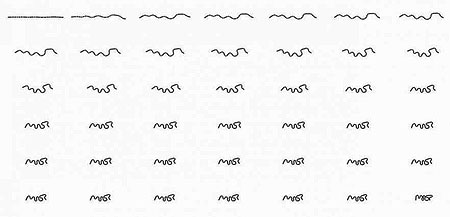(MIT News: Cambridge, MA) -- Today’s 3D printers, in which devices rather like inkjet-printer nozzles deposit materials in layers to build up physical objects, are a great tool for designers building prototypes or small companies with limited product runs.
|
ADVERTISEMENT |
But they take a long time to produce objects that are more than a couple of centimeters in height, and many researchers believe that they’ll realize their full potential only when they can generate sheets of patterned materials that will automatically warp themselves into larger, more complex shapes.
In the latest issue of the journal Scientific Reports, a team of researchers at MIT and the companies Autodesk and Stratasys describe a new process for designing and manufacturing such “programmable matter” that could make it more versatile. Whereas much prior work—at MIT and elsewhere—concentrated on materials that self-fold, the new procedure yields materials that also self-stretch.

Hot off the 3D printer, a polymer strand dropped in water folds itself into the MIT logo.
…
Add new comment